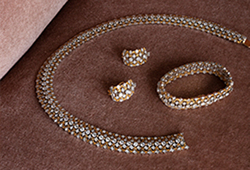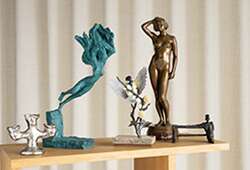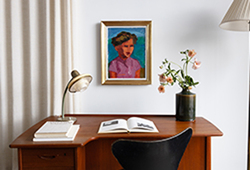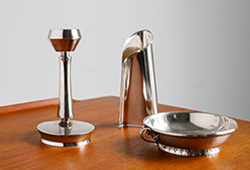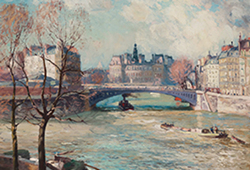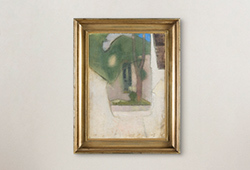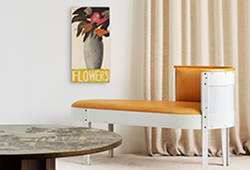One century of jewellery: from early 19th to early 20th century

All the jewellery are sold at Helsinki Winter Sale, November 27 - December 13.
The 19th century was a period of great change in many ways. Still, despite all the changes the jewellery of this time remained traditional and drew inspiration from older time periods, especially the antiquity and renaissance. The Romantic movement was, however, a change that was fast absorbed into the 19th-century jewellery design and big, extravagant pieces that were richly decorated with gemstones and pearls made according to the Georgian and Victorian-style ideals. The main source of inspiration was nature and its plants. Brooch 1256601 in the form of a spray is a typical piece of jewellery of this time due to its form and naturalistic look and was with certainty used as a brooch but possible also as a hair ornament. The brooch, 1280324, by Roland Mellin is also a style that was commonly used in the early 19th century and more so due to the pietra dura, a renaissance technique that was popular during this time. 19th-century diamond rings, 1211455, were usually made of a big, usually foiled, rose-cut diamond with smaller ones around it to make I appear like one big diamond.
Towards the end of the century art nouveau and the arts and crafts movements influenced the jewellers and the extravagant pieces soon had to give place to smaller, dainty and more free designs. Small brooches were used on dresses during the daytime and as hair ornaments during the evenings. They usually hade the form of stars, rays and crescent moons, as seen in brooch 1256600, but insects and other natural forms were popular. Late 19th-century rings were more playful and bigger and usually reached from knuckle to knuckle, 1277609. Bracelets were, however, simpler but beheld the whiplash line either as a part of the design or as an engraved décor, as seen in 1269801 and 1263710.
Necklaces were big but at the same time light with flowing forms and made in precious metals in combination with for example enamel, pearls and gemstones, a combination found in the pearl and diamond necklace 1274711. It was also common to use synthetic stones, since the art nouveau style advocated the usage of for the time non-traditional materials in jewellery, as seen in brooch 1274408.
The early 20th century was not only dominated by the ideals of the art nouveau style but also by the Edwardian or la belle epoque style, which drew inspiration from the fluidity of art nouveau to create more traditional diamond jewellery with motifs such as garlands, sprays, bows and lace. The belle époque necklaces had thin chains and a small or big but delicate pendant, as seen in the necklace/brooch 1274616 and 1275265, but pearl colliers with diamond-covered clasps or pendants were popular. The rings were also delicate and beheld the same traditional forms and could cover a big part of the finger, which is the case in the diamond ring 1267483.
The romanticism and naturalism that had dominated from the 18th century changed into the art déco style, as a result of the societal changes that took place after the first world war. The floral and romantic motifs had to give way to a geometric style inspired by the new world and its societal changes.
The jewellery is sold at Helsinki Winter Sale, November 27 - December 13. For more information, please contact: Frida Nyman: frida.nyman@bukowskis.com, +358 (0)50 407 9406.





